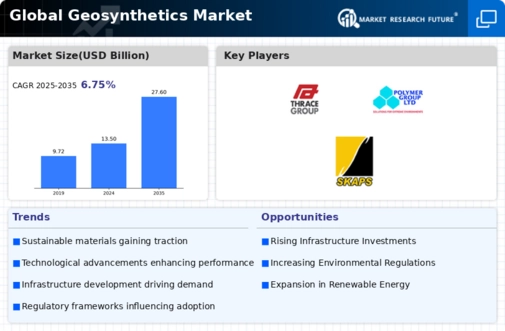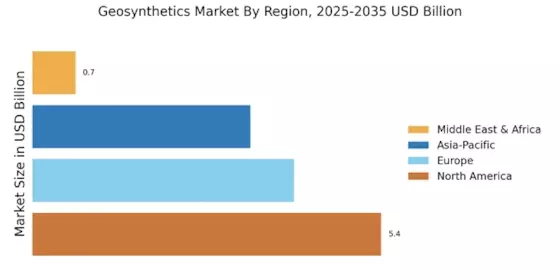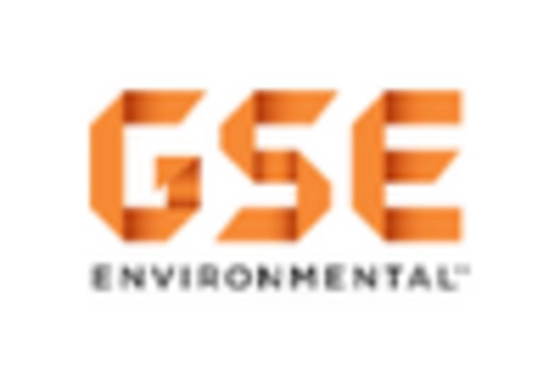Technological Innovations
Technological advancements are reshaping the Geosynthetics Market, leading to the development of innovative products that enhance performance and application versatility. Recent innovations include the introduction of smart geosynthetics, which incorporate sensors to monitor structural integrity and environmental conditions. These advancements are expected to drive market growth, as they offer enhanced functionality and efficiency in various applications, including civil engineering and environmental protection. The market is projected to witness a growth rate of around 6% annually, driven by these technological innovations. As industries increasingly recognize the benefits of integrating technology with geosynthetics, the demand for advanced solutions is likely to rise.
Regulatory Support and Standards
Regulatory frameworks and standards play a crucial role in shaping the Geosynthetics Market. Governments worldwide are implementing stringent regulations aimed at promoting the use of geosynthetics in construction and environmental projects. These regulations often mandate the use of geosynthetic materials for specific applications, such as erosion control and waste management, thereby driving market demand. The establishment of standards ensures that geosynthetics meet safety and performance criteria, further encouraging their adoption. As regulatory support continues to strengthen, the geosynthetics market is expected to experience sustained growth, with an estimated increase in market size projected to reach several billion dollars in the coming years.
Rising Infrastructure Development
The increasing demand for infrastructure development is a primary driver of the Geosynthetics Market. As nations invest in transportation networks, urban development, and public utilities, the need for durable and efficient materials becomes paramount. Geosynthetics Market, known for their strength and versatility, are increasingly utilized in road construction, landfill management, and erosion control. According to recent estimates, the infrastructure sector is projected to grow at a compound annual growth rate of approximately 5.5%, which directly correlates with the rising adoption of geosynthetic materials. This trend indicates a robust market potential for geosynthetics, as they offer solutions that enhance the longevity and sustainability of infrastructure projects.
Environmental Concerns and Sustainability
Growing environmental concerns are significantly influencing the Geosynthetics Market. As awareness of ecological impacts rises, industries are increasingly adopting sustainable practices. Geosynthetics Market provide an effective means of minimizing environmental degradation, particularly in applications such as waste containment and soil stabilization. The market for geosynthetics is expected to expand as companies seek eco-friendly alternatives to traditional materials. Furthermore, the global push towards sustainable construction practices is likely to enhance the demand for geosynthetics, which are often made from recycled materials. This shift not only addresses environmental issues but also aligns with regulatory frameworks aimed at promoting sustainability in construction.
Growing Demand in Agriculture and Landscaping
The agricultural and landscaping sectors are emerging as significant drivers for the Geosynthetics Market. The use of geosynthetics in these fields enhances soil stability, water management, and crop yield. With the increasing focus on sustainable agricultural practices, geosynthetics are being utilized for applications such as drainage systems, erosion control, and soil reinforcement. The market for geosynthetics in agriculture is anticipated to grow at a rate of approximately 4.5% annually, reflecting the rising awareness of their benefits. As the agricultural sector seeks innovative solutions to improve productivity and sustainability, the demand for geosynthetics is likely to expand, further contributing to the overall growth of the market.


















Leave a Comment